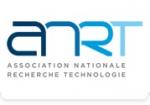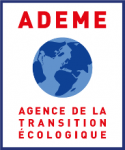Analysis of Electroencephalograms of Children with Epilepsy using Complex Wavelet Methods
| ABG-133573 | Master internship | 6 months | 600 euros |
| 2025-09-26 |
- Mathematics
- Computer science
- Engineering sciences
Employer organisation
The Angevin Laboratory for Research in Systems Engineering (LARIS) is a multidisciplinary Research Unit in Science and Technology affiliated with the University of Angers (UA). The laboratory brings together researchers from five UA faculties and schools (Polytech Angers, IUT Angers-Cholet, Faculty of Science, Faculty of Health, UFR ESTHUA), as well as from the Angers University Hospital, the Catholic University of the West, and ESAIP.
The Jean Kuntzmann Laboratory (LJK) is a joint research unit (UMR 5224) shared by Université Grenoble Alpes, CNRS, Grenoble INP, and Inria.
It is organized into three research departments in applied mathematics and computer science.
The LJK also hosts MaiMoSiNE, the Grenoble basin modeling center, and is deeply involved in AMIES (the Agency for Mathematics in Interaction with Society). Both initiatives foster multidisciplinary partnerships between academic teams and industry in the fields of mathematics and modeling—at the national level for AMIES, and at the regional level for MaiMoSiNE.
Description
1 Introduction
Epilepsy is one of the most common neurological diseases worldwide, affecting about 1.0% of the population (i.e., 10.2 cases per 1,000 inhabitants). Several examinations are implemented to ensure optimal patient care and appropriate follow-up: clinical examination, electroencephalographic (EEG) recordings, magnetic resonance imaging (MRI), etc. Scalp EEG remains the most widely used examination because it is simple, non-invasive, low-cost, and offers excellent temporal, and even spatial, resolution.
EEG is a non-stationary and multivariate signal. For each EEG electrode, the univariate signal combines both short-memory components (correlations that decay rapidly, typical of noise or local oscillations) and long-memory components (power-law persistent correlations over large time scales, reflecting sustained brain dynamics). Moreover, multivariate signals exhibit well-established long-range temporal correlations (LRTC) in the literature [Linkenkaer-Hansen et al., 2001, Hardstone et al., 2012, Achard et al., 2008], which have been shown to be altered in several neurological disorders, notably depression, schizophrenia, and epilepsy [Linkenkaer-Hansen et al., 2005,Hare et al., 2021, Grubov et al., 2025].
To analyze these properties, [Achard and Gannaz, 2024] proposed an approach based on local Whittle estimation combined with quasi-analytic wavelets. This method locally approximates the spectral likelihood to capture non-stationary dynamics, uses quasi-analytic wavelets to extract amplitude
and phase, and enables the estimation of both the strength and phase delay of connections between EEG signals. The objective of this internship is to experimentally validate the approach proposed in [Achard and Gannaz, 2024] on EEG signals from children with epilepsy.
2 Context
The pediatric neurology department of the Angers University Hospital (CHU d’Angers) has a cohort of EEG data collected from patients monitored in a clinical context. In this work, we will focus on recordings from five patients with childhood absence epilepsy (CAE), acquired prior to treatment and at various time points during pharmacological follow-up.
The scientific hypothesis is that the interictal traces of CAE patients constitute control states in which treatment should not modify signal dynamics. The analysis will address both univariate short-and long-memory components and multivariate LRTC.
3 Methodology
The analysis will rely on a time–frequency approach using quasi-analytic wavelets, which provide an accurate representation of EEG signal amplitude and phase. Based on this decomposition, local spectral estimation will be performed using the Whittle method, yielding spectra as well as long-memory dependence parameters. These estimates will then be used to extract measures of functional connectivity between electrodes, characterized by both link strength and phase delays. Reproducibility of the results will be assessed at intra-subject and inter-subject levels using appropriate statistical analyses. Finally, the performance of this method will be compared with that obtained using more classical approaches based on the Fourier transform and standard wavelets.
4 Work to be carried out
- Finalize the implementation of local Whittle estimation with quasi-analytic wavelets
- [Achard and Gannaz, 2024] for the analysis of interictal EEG.
- Characterize functional connectivity between electrodes (strength and phase delay) under different therapeutic conditions (before and during treatment) and in two recording states (eyes closed, eyes open).
- Study intra-individual and inter-individual reproducibility of the results.
- Assess the impact of methodological parameters: number of electrodes, window width, choice of
- real vs. complex wavelet.
- Compare short- and long-memory dynamics across conditions.
5 Scientific environment and perspectives
The work will be conducted in collaboration between LJK, Grenoble INP (Sophie Achard) and LARIS Angers (UA, UCO and CHU; Anne Humeau-Heurtier, Antoine Jamin, Nisrine Jrad, Patrick van Bogaert).
The internship will take place either in Angers or in Grenoble, depending on the candidate’s preference.
A continuation of this research topic as a PhD can be envisaged.
References
[Achard et al., 2008] Achard, S., Bassett, D. S., Meyer-Lindenberg, A., and Bullmore, E. (2008). Fractal connectivity of long-memory networks. Physical Review E - Statistical, Nonlinear, and Soft Matter Physics, 77:036104.
[Achard and Gannaz, 2024] Achard, S. and Gannaz, I. (2024). Local whittle estimation with (quasi-) analytic wavelets. Journal of Time Series Analysis, 45(3):421–443.
[Grubov et al., 2025] Grubov, V. V., Kuc, A. K., Kurkin, S. A., Andrikov, D. A., Utyashev, N., Maksimenko, V. A., Karpov, O. E., and Hramov, A. E. (2025). Harnessing long-range temporal correlations for advanced epilepsy classification. PRX Life, 3(1):013005.
[Hardstone et al., 2012] Hardstone, R., Poil, S.-S., Schiavone, G., Jansen, R., Nikulin, V. V., Mansvelder, H. D., and Linkenkaer-Hansen, K. (2012). Detrended fluctuation analysis: A scale-free view on neuronal oscillations. Frontiers in Physiology, 3.
[Hare et al., 2021] Hare, S. M., Adhikari, B. M., Du, X., Garcia, L., Bruce, H., Kochunov, P., Simon, J. Z., and Hong, L. E. (2021). Local versus long-range connectivity patterns of auditory disturbance in schizophrenia. Schizophrenia research, 228:262–270.
[Linkenkaer-Hansen et al., 2005] Linkenkaer-Hansen, K., Monto, S., Rytsälä, H., Suominen, K., Isometsä, E., and Kähkönen, S. (2005). Breakdown of long-range temporal correlations in theta oscillations in patients with major depressive disorder. Journal of Neuroscience, 25(44):10131–10137.
[Linkenkaer-Hansen et al., 2001] Linkenkaer-Hansen, K., Nikouline, V. V., Palva, J. M., and Ilmoniemi, R. J. (2001). Long-range temporal correlations and scaling behavior in human brain oscillations. The Journal of neuroscience : the official journal of the Society for Neuroscience,21:1370–1377.
Profile
The candidate should have a solid background in signal processing and programming for data science (R, Matlab, or Python).
Starting date
Vous avez déjà un compte ?
Nouvel utilisateur ?
Get ABG’s monthly newsletters including news, job offers, grants & fellowships and a selection of relevant events…
Discover our members
 Aérocentre, Pôle d'excellence régional
Aérocentre, Pôle d'excellence régional  SUEZ
SUEZ  ANRT
ANRT  ASNR - Autorité de sûreté nucléaire et de radioprotection - Siège
ASNR - Autorité de sûreté nucléaire et de radioprotection - Siège  Nokia Bell Labs France
Nokia Bell Labs France  Tecknowmetrix
Tecknowmetrix  TotalEnergies
TotalEnergies  CASDEN
CASDEN  Groupe AFNOR - Association française de normalisation
Groupe AFNOR - Association française de normalisation  ONERA - The French Aerospace Lab
ONERA - The French Aerospace Lab  PhDOOC
PhDOOC  Ifremer
Ifremer  MabDesign
MabDesign  Généthon
Généthon  MabDesign
MabDesign  CESI
CESI  ADEME
ADEME  Laboratoire National de Métrologie et d'Essais - LNE
Laboratoire National de Métrologie et d'Essais - LNE  Institut Sup'biotech de Paris
Institut Sup'biotech de Paris




